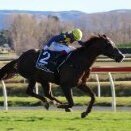-
Available Subscriptions
The Rest of the World
80,055 topics in this forum
-
-
- Journalists
- 0 replies
- 101 views
-
-
-
- Journalists
- 0 replies
- 165 views
-
-
- Journalists
Russian Camelot Retired to Stand in Australia
-
- Journalists
- 0 replies
- 88 views
-
- Journalists
Daughter of Again Debuts at Leopardstown
-
- Journalists
- 0 replies
- 89 views
-
- Journalists
Feeling the Love
-
- Journalists
- 0 replies
- 99 views
-
- Journalists
Dubawi’s Highland Avenue Takes the Feilden
-
- Journalists
- 0 replies
- 111 views
-
- Journalists
GAIN to Sponsor New Curragh Race Series
-
- Journalists
- 0 replies
- 97 views
-
- Journalists
Sibling To Sizing John Heads Goffs UK Stores
-
- Journalists
- 0 replies
- 97 views
-
- Journalists
TIF: Wagering Insecurity, Part I–Expectations
-
- Journalists
- 0 replies
- 84 views
-
- Journalists
Keeneland Catalogs 66 Entries for April Sale
-
- Journalists
- 0 replies
- 113 views
-
- Journalists
Fasig-Tipton Midlantic Catalogue Now Online
-
- Journalists
- 0 replies
- 100 views
-
- Journalists
Bloodstock Agent Chris Richner Dies At 68
-
- Journalists
- 0 replies
- 91 views
-
-
- Journalists
- 0 replies
- 117 views
-
-
- Journalists
Cotai Glory Off the Mark At Newmarket
-
- Journalists
- 0 replies
- 96 views
-
- Journalists
Tattersalls Cheltenham April Entries Revealed
-
- Journalists
- 0 replies
- 103 views
-
- Journalists
Essential Quality Holds Top Spot on NTRA Poll
-
- Journalists
- 0 replies
- 108 views
-
-
- Journalists
- 0 replies
- 101 views
-
-
- Journalists
Violence Filly Fastest at OBS Monday
-
- Journalists
- 0 replies
- 128 views
-
- Journalists
The TDN Derby Top 20 For April 13
-
- Journalists
- 0 replies
- 449 views
-
-
- Journalists
- 0 replies
- 108 views
-
-
-
- Journalists
- 0 replies
- 129 views
-
-
- Journalists
Back To HQ
-
- Journalists
- 0 replies
- 112 views
-
-
- Journalists
- 0 replies
- 103 views
-
-
- Journalists
The Weekly Wrap: Times Are A-Changin’
-
- Journalists
- 0 replies
- 111 views
-
- Journalists
Breeze-Up Sector Hopes For Positive Reboot
-
- Journalists
- 0 replies
- 82 views


